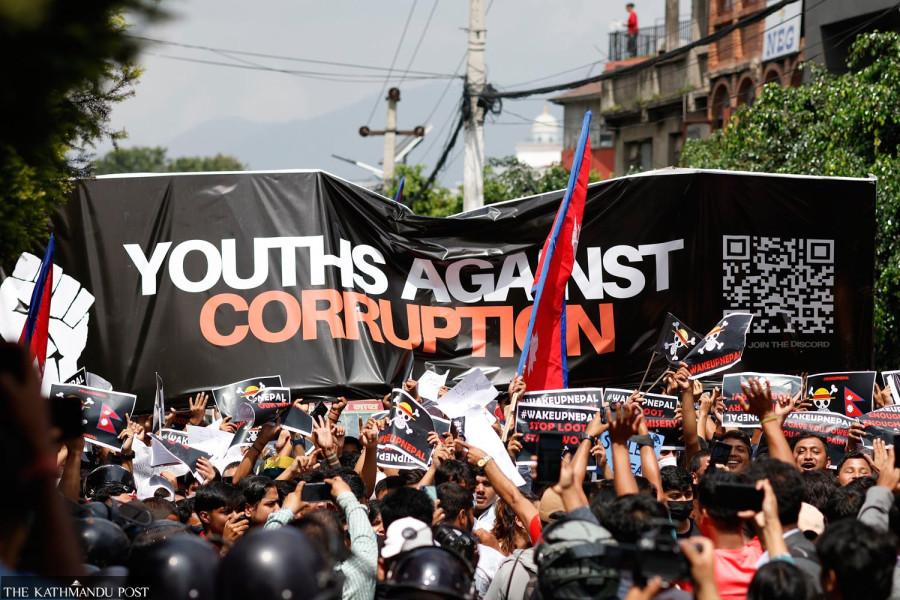By Dipesh Ghimire
Gen-Z Protests Deepen Nepal’s Economic Slowdown — Key Sectors Show Decline Across Investment, Banking, Tourism, and Real Estate

The two-day Gen-Z movement, held on September 8–9 (Bhadra 23–24), has had a significant and lasting impact on Nepal’s already fragile economy. Although the protests lasted only 48 hours, their ripple effects have continued for weeks—affecting foreign investment, banking activities, tourism, and the real estate market. The event has underscored how deeply political instability can shake confidence in Nepal’s economic system.
The government had projected 5.5% economic growth for the current fiscal year. However, the World Bank recently revised this projection down to 2.1%, identifying the Gen-Z protests as one of the major reasons behind the slowdown. The International Monetary Fund (IMF) has also reduced its own growth forecast for Nepal, citing ongoing uncertainty and weak investor confidence.
Although the protests were short-lived, they generated a long-lasting psychological and political shock, which created policy paralysis within government agencies and slowed decision-making in both the public and private sectors. The result has been a clear decline in economic momentum over the past month.
Data from the Department of Industry shows a dramatic fall in foreign direct investment (FDI) commitments following the protests.
In Shrawan, commitments totaled Rs. 24.10 billion.
In Bhadra, they fell sharply to Rs. 8.98 billion.
By Ashoj, commitments had dropped further to only Rs. 2.04 billion.
Similarly, the value of share purchase agreements declined from Rs. 1.99 billion in Shrawan to just Rs. 2 million in Ashoj. The number of companies receiving commitments also decreased, indicating a widespread loss of investor confidence.
Foreign investors have grown increasingly cautious, interpreting the political unrest as a signal of rising uncertainty and potential policy risk in Nepal.
The Nepal Rastra Bank (NRB) reports that total bank deposits increased by Rs. 124 billion between mid-September and mid-October, reaching Rs. 7.455 trillion. However, loan disbursements rose by only Rs. 3 billion in the same period—barely any growth.
This contrast highlights a weak credit environment, where banks are receiving deposits but hesitant to issue new loans. Such a trend indicates low consumer and business confidence, as both borrowers and lenders remain uncertain about the future. Economists interpret this as a clear sign of economic stagnation—where liquidity exists but is not being mobilized into productive sectors.
The tourism sector, which had been recovering gradually after the pandemic, also took a hit following the protests.
In September 2025, Nepal welcomed 78,711 tourists, compared to 96,302 tourists in September 2024—an 18.3% decline year-on-year.
Industry stakeholders say that international media coverage of political instability and security concerns discouraged visitors. The decline poses a serious threat to the tourism recovery that Nepal had been experiencing since 2023, particularly in the trekking and hospitality industries.
The Department of Land Management and Archives has reported a major decline in real estate transactions during the months following the protests.
Shrawan: 31,621 land deeds registered
Bhadra: 27,494 land deeds registered
Ashoj: 23,353 land deeds registered
Compared to the same period last year, land deed registrations fell by over 20%. Likewise, capital gains tax revenue declined from Rs. 1.11 billion last year to Rs. 1.06 billion this year.
This drop indicates reduced real estate activity and declining confidence among property buyers and investors. Experts say that uncertainty in government policy and weak market sentiment have made individuals reluctant to invest in immovable assets.
The Gen-Z movement, though short in duration, has exposed the deep fragility of Nepal’s economic structure. Even temporary political unrest has been enough to derail investor confidence, freeze lending, and dampen market activities.
Foreign investors view Nepal as politically unstable, domestic investors are adopting a wait-and-see approach, and consumers are cutting back on spending. This combination has created a self-reinforcing cycle of low demand and low investment.
Meanwhile, the interim government and major political parties have yet to take concrete measures to restore market confidence or stabilize key economic indicators. The absence of a clear recovery plan has left the economy vulnerable to further shocks.
The Gen-Z movement may have been brief, but it served as a powerful reminder of how fragile Nepal’s economy truly is. The steep declines in investment, credit growth, tourism, and real estate show how easily economic confidence can crumble in the face of political uncertainty.
If Nepal’s leaders fail to restore trust, accelerate reforms, and ensure policy stability, the short-term economic dip could turn into a long-term stagnation. The current situation demands not just recovery efforts—but a restructuring of Nepal’s economic governance model to make it more resilient against social and political shocks.









